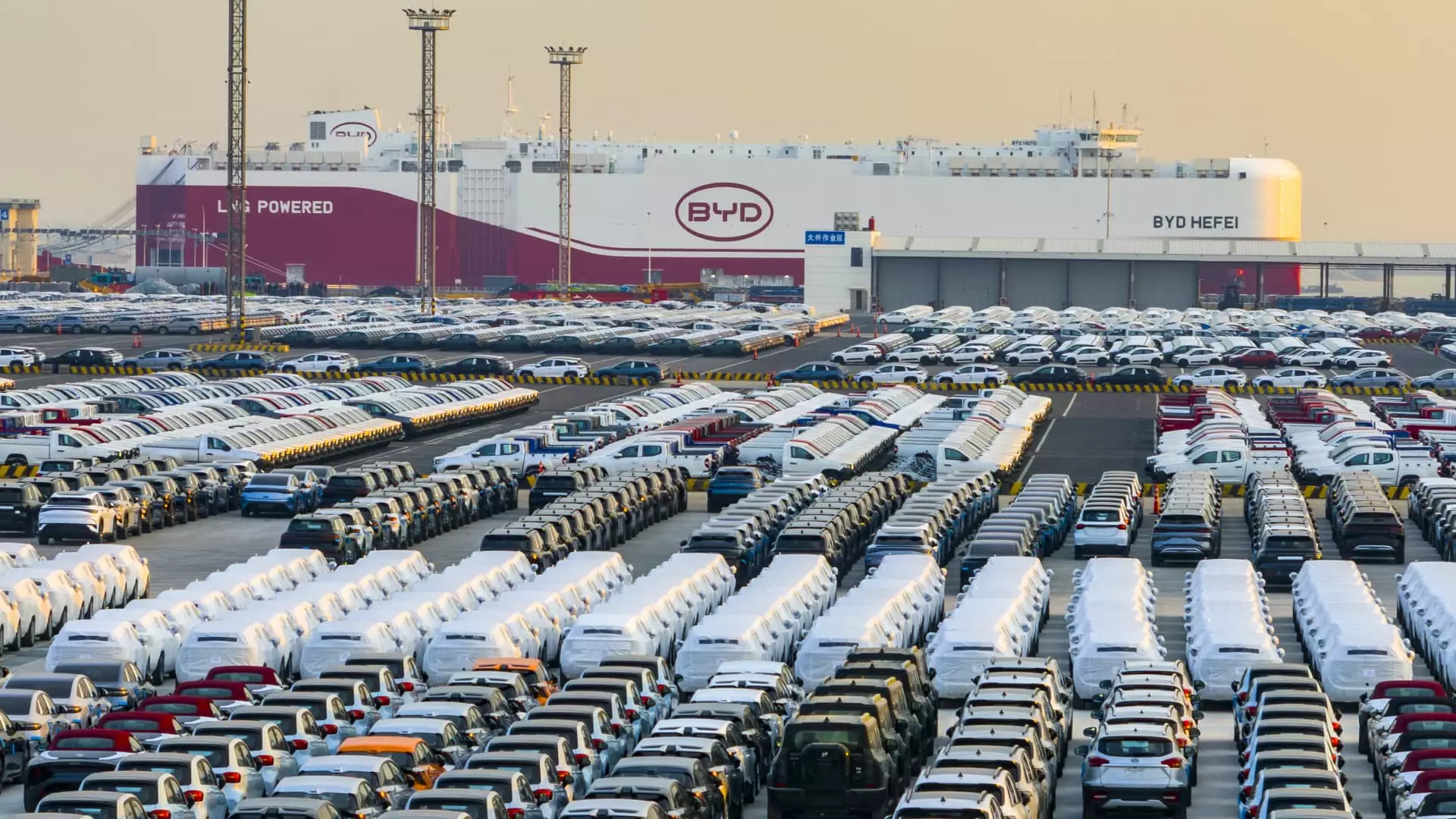China’s electric vehicle (EV) market has achieved remarkable growth in recent years, propelled by robust sales figures and a surge in consumer interest. According to the China Passenger Car Association, new energy vehicles (NEVs)—which encompass both pure electric and hybrid cars—experienced a staggering 42% growth in sales in the previous year, reaching nearly 11 million units. At the forefront of this growth is BYD, which not only leads the market but also saw its sales rise by over 40%, recording approximately 4.3 million unit sales, surpassing its own growth target significantly. This substantial market activity is indicative of a thriving industry fostered by favorable government policies and consumer incentives, which have provided a conducive environment for new entrants and established players alike.
However, as buoyant as these figures appear, analysts are forecasting a shift in the dynamics of this competitive landscape. Predictions for 2025 indicate a potential slowdown in growth, with notable strategic implications for various automakers operating within the sector. Due to the extraordinary swell in demand and market entry from numerous competitors, there is a palpable tension brewing as organizations vie for consumer attention while navigating diminishing margins.
Despite past successes, the electric vehicle sector in China faces daunting challenges moving forward. HSBC analysts anticipate that sales growth will decelerate to about 20% for this year, a significant reduction when juxtaposed with previous performance metrics. The anticipated slowdown is expected to influence significant market changes, particularly with the likelihood for increased consolidation among manufacturers. This transition signals a paradigm shift where only the most resilient players—such as BYD, Tesla, and Li Auto—are expected to remain profitable, as highlighted by Yuqian Ding, head of China autos research at HSBC.
Ding’s observations underscore an unsustainable profit model where many automakers grapple with razor-thin margins. The trend toward rising competitiveness has spawned price wars, wherein companies—such as Xiaomi—lower their pricing to capture market share at the expense of profitability. As EV manufacturers adjust their pricing strategies in reaction to one another, the overall profit landscape within the automotive sector is undergoing a contraction, impacting overall industry vitality.
A growing number of companies entering the electric vehicle market have led to overcapacity, raising concerns about the sustainability of this rapid expansion. Appotronics—a laser display company—recently ventured into the auto market by producing in-car projector screens; however, their future outlook remains tempered. With growth expectations plateauing and market conditions shifting, CEO Li Yi has expressed reservations about the financial health of many automobile manufacturers, stressing that reduced research and development budgets could adversely affect innovation in the space.
Such financial constraints impede companies’ abilities to keep up with the evolving technological landscape. As the market approaches a saturation point, the urgency for manufacturers to differentiate through innovation intensifies, further complicating business strategies amidst fierce competition.
Looking forward, it becomes increasingly evident that the next wave of competition will hinge on technological advancements, particularly in smart features that augment driving experiences. Companies are exploring avenues to enhance in-car entertainment systems and smart driver-assist technologies in their offerings. With NEV penetration exceeding 50% of new vehicle sales, the race for innovation has never been more critical.
Despite speculation of a slowdown, Appotronics is poised to introduce a new generation of projector technology aimed at enriching the in-car experience. Li has indicated that the company is focused on pioneering laser-based applications to inhabit spaces previously reserved for conventional lighting systems, seeking collaboration with major players like Tesla to further push the boundaries of automotive technology.
The landscape of China’s electric vehicle market is at a crossroads, marked by past successes and impending challenges. Continually shifting market dynamics—driven by increased competition, price wars, and a focus on technological differentiation—require manufacturers to rethink their strategies. While the immediate future may appear uncertain, the ability to innovate and adapt will ultimately dictate which companies thrive in the evolving landscape of new energy vehicles in China. As we move into the next decade, the balancing act between growth and sustainable profitability will shape not only the future of individual manufacturers but also the broader trajectory of the industry itself.

